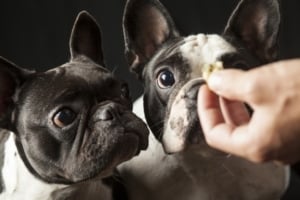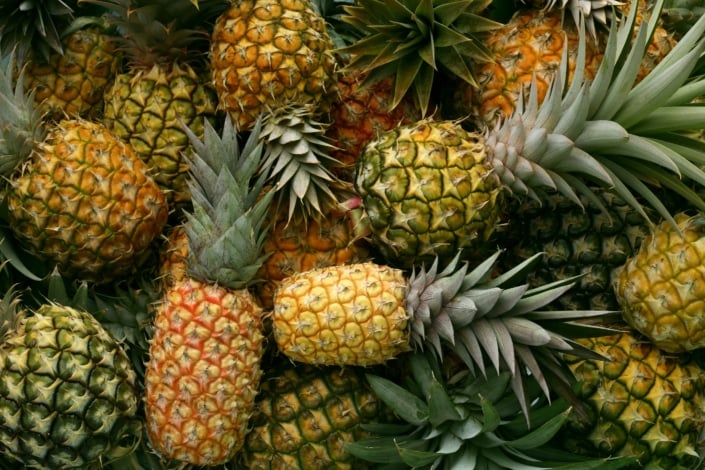8 Health Benefits of Pistachios, 3 Side Effects & Nutrition Facts

Pistachios are a very healthy, nutritious and tasty snack for in between meals. In this article, you can find out more about the "happy nut", what you should be aware of when buying and eating them, and what they can be used for.
The fact that pistachios are healthy and nutritious is nothing new: they’ve been a popular food for thousands of years and the journey since they were first discovered has been a long one.
What are pistachios?

What are pistachios?
Strictly speaking, pistachios are not nuts at all, but belong to the drupe family, whereby we only eat the seed and discard the shell that surrounds it. They grow on deciduous trees that belong to the sumac family, just like the mango or cashew, for example.
Pistachio trees can grow to be over 300 years old and reach a height of up to 12 meters. However, they are kept much smaller when cultivated on plantations.
The name pistachio is derived from the Latin "pistacia vera" which means "green almond".
The pistachio gets its nickname the "smiling nut" or "happy nut" as the shell opens sideways at the seam during drying.
Where do pistachios come from?
People used to cultivate pistachio trees and consume the fruits in the Middle East probably going back as far as the Neolithic period, more than 10,000 years ago. In the early days, they were a delicacy, reserved exclusively for the nobility.
Pistachios were used as a dye and were even considered a remedy for toothache and cirrhosis of the liver. Over the course of time, they made their way to other countries through trading routes and enjoyed great popularity due to their long shelf life and high nutritional value.
They reached Italy during the reign of the Roman emperor Tiberius, making it to the USA at long last in the 19th century.
Cultivation

Pistachio plantation
Nowadays, the world’s largest growing regions are located in Iran, California (USA) and Turkey. Pistachios are also grown in Europe on the Mediterranean coast, in Greece and Sicily, for example.
Harvesting takes place in September and October by shaking the trees and collecting the pistachios as they fall. Their taste is slightly sweet, nutty and very aromatic.
Pistachios: nutritional facts and calories
Below you will find an overview of the main nutritional values of pistachios, from the calories to the healthy vitamins they contain.
| Nutritional values | 100 grams pistachios |
|---|---|
| Calories | 602 kcal |
| Protein | 18 g |
| Fat content | 52 g |
| Carbs | 12 g |
| Minerals | |
| Sodium | 5 mg |
| Potassium | 1020 mg |
| Calcium | 135 mg |
| Magnesium | 160 mg |
| Phosphate | 500 mg |
| Iron | 7.3 mg |
| Vitamins | |
| Beta-carotene | 150 µg |
| Vitamin E | 5.2 mg |
| Vitamin C | 7 mg |
| Folic acid | 60 µg |
Health Benefits of Pistachios

Pistachios: the health benefits
Pistachios contain a lot of nutrients, meaning they are extremely healthy, and can also help with a variety of physical ailments or even prevent disease. Read on to find out more about how pistachios can benefit your health.
Pistachios can prevent cardiovascular disease
Pistachios are high in unsaturated fatty acids, which are especially good for the heart and blood vessels. As such, they can help lower your cholesterol, reducing the risk of cardiovascular disease.
The World Health Organization also recommends consuming more potassium if you have high blood pressure, and pistachios have plenty of this.
Pistachios can help with diabetes

Pistachios can help with diabetes
Pistachios also have a positive effect on your body’s triglyceride levels. High triglyceride levels increase the risk of cardiovascular diseases and obesity, among other things.
Diabetes patients, in particular, have high levels of triglyceride and these can be noticeably reduced by consuming pistachios, as can excessive blood sugar levels.
Many diabetics also suffer from having certain gut bacteria, which can also be reduced by eating pistachios.
Pistachios can reduce the risk of cancer
Due to their high gamma-tocopherol content, pistachios have a positive effect on the prevention of certain types of cancer, including lung cancer, for example. Gamma-tocopherol is a component of vitamin E and protects against premature cell ageing, meaning that it also conducive to softer skin.
Due to their positive influence on certain gut bacteria, pistachios can reduce the risk of colon cancer as well as improve digestion.
Pistachios can help you lose weight

Pistachios can help you lose weight
Although you might not suspect it due to their high fat content, pistachios can be excellent at helping you lose weight. First and foremost, they contain a lot of healthy fats that burn existing fatty deposits in the body.
Secondly, your body does not completely absorb their fats, meaning that they do not make you gain any weight, and they even keep you full for a long period of time.
However, you should not consume pistachios as an addition to your usual diet as they are high in calories. Eat them as a substitute for chocolate or chips instead.
Thanks to their high protein content, pistachios can also help you build muscle.
Top tip: if you buy pistachios with the shells still on, this will stop you eating them too quickly, as you’ll have to unshell them before popping them in your mouth. This will make you eat more slowly and more consciously, and your body will have more time to realize when it feels full.
The benefits of pistachios for your skin

The benefits of pistachios for your skin
The high content of vitamin E in pistachios also has a positive impact on your skin. What are known as phenolic compounds work as antioxidants to make pistachios a natural skincare product. They are capable of destroying free radicals, which can cause premature ageing.
In fact, pistachio oil is used in many skincare products as it is a potent antioxidant, and using pistachios in your skincare routine will make your skin glow, help to control acne and improve your skin elasticity.
The benefits of pistachios in pregnancy

The benefits of pistachios in pregnancy
During pregnancy and when breastfeeding, a woman’s body needs more folic acid, a B vitamin. Pistachios alone cannot cover this need completely, but they still contain a lot of the vitamin.
In addition, the high protein content helps to build and maintain muscle. This is not only good for the pregnant woman, but also for the embryo.
The benefits of pistachios for men
The vitamin E in pistachios helps improve the function of the male sex organ and reduces how much estrogen the male body produces. Pistachios are also popular among men as they can help increase sperm count.
Pistachios contain a healthy amount of L-arginine, which the body uses to create nitric oxide. This helps to promote blood flow when erect.
What’s more, they are one of the few foods that are considered to have aphrodisiac properties, leading to better sexual vitality, especially in men.
Pistachios Before Bed

Pistachios Before Bed
Pistachios have a relatively high content of melatonin, a hormone that is produced by the brain and shapes your sleep pattern.
The level of melatonin in your body fluctuates, tending to be low in the morning and increasing throughout the day. It reaches its peak at night and your body tells you when it is time to go to bed.
Unfortunately, your melatonin level can be easily affected by stress or too little light during the day. If your melatonin level is too low, your brain and body can no longer tell when it’s time to go to sleep.
And this is where pistachios can come in. Eating a handful of pistachios before going to bed will boost your natural melatonin level and can make you toss and turn less during the night.
Conclusion: Are Pistachios Good for You?

Are Pistachios Good for You?
In conclusion, pistachios have many benefits for your health. They have a positive influence on your blood sugar level, can prevent cardiovascular diseases by lowering your cholesterol level, help you lose weight and promote a healthy cell structure and thus healthy skin as they contain important minerals and vitamins.
Pistachios are beneficial for the health of pregnant women and their fetus, while for men they improve sperm quality and have an aphrodisiac effect.
What’s more, they can help regulate your melatonin level and thus improve your sleep.
So, to sum up: yes, pistachios are good for you.
But before you get excited and start eating your weight in pistachios, you should first inform yourself about the possible side effects that can occur when you eat too many. Read on to find out more.
Side Effects of Pistachios
Despite all the benefits and positive effects that pistachios can have, the little "green almonds" also have a few disadvantages that you should be aware of.
Pistachios Contain Lots of Calories

Side Effects of Pistachios
True, pistachios are conducive to losing weight when they are used to replace unhealthier snacks. However, they are also real calorie bombs.
100 grams of pistachios contain around 600 kilocalories, which is why your calorie intake can quickly add up if you consume them in large amounts. Therefore, you should definitely consume them in moderation.
A healthy portion of pistachios amounts to about 165 kilocalories, which is equal to around 49 nuts or 30 grams. Walnuts, almonds or even hazelnuts, however, contain far more calories.
Pistachios Are Toxic If Stored Incorrectly
If pistachios are harvested or stored incorrectly, they can quickly damage your health.
If the stone fruit is not kept dry enough – both when being harvested and when being stored, including in your own home – mold forms, which then, in turn, results in the formation of the toxic known as aflatoxin. This substance is suspected of being carcinogenic and even small amounts can be harmful to health.
For this reason, you should make sure that you store them in a cool, dry place, otherwise they will quickly turn brown and rancid. Shelled pistachios are best stored in an airtight container in the refrigerator.
If you store them correctly, they will keep for several months and if you want to extend their shelf life so they keep for up to one year, you can also freeze them.
Can Dogs Eat Pistachios?

Can Dogs Eat Pistachios?
Theoretically, dogs are allowed to eat pistachios, and you should take the same things into consideration when feeding them to your dog as you would when eating them yourself: they have a lot of nutritional value, contain a lot of calories and there is a risk of mold.
However, dogs are allergic and even more sensitive to mold than we humans are. It is not fatal for them, but our more sensitive four-legged friends can quickly develop liver problems and gastrointestinal disorders.
So if your furry friend gobbles up some pistachios from time to time, it’s no problem. However, you should make sure that they have been stored correctly and that your dog doesn’t eat too many. Another thing to bear in mind is that you shouldn’t give them any salted pistachios, because salt in these quantities is very unhealthy for them.
Conclusion: Are Pistachios Bad for You?

Are Pistachios Bad for You?
Even though pistachios contain a lot of calories and can be harmful to your health if stored incorrectly, to sum up, they are not bad for you.
If you remember to store them properly and eat them in moderation, there are nothing but benefits to be had.
The worst thing about pistachios is that they are so expensive.
If you want to learn more about what to be aware of when buying pistachios, keep on reading.
Pistachios Purchase Tips
Here are a few tips to give you peace of mind when buying and eating pistachios, despite the few risks we mentioned above.
Avoid Risks

Avoid Risks
Mold on pistachios is not always immediately visible to the naked eye, so your best bet is to look for other characteristics to make sure the pistachio is good to eat.
Make sure the pistachios are nice and green before you eat them. As a rule of thumb: the greener the pistachio, the better the quality.
Only when pistachio shells are cracked at the seam, i.e. slightly open, does it mean that the stone fruit is really ripe. So if you see pistachios in the supermarket with their shells still closed, you should refrain from buying them.
Pistachios are usually odorless. If they smell slightly musty, you should refrain from eating them. If they taste funny, you should definitely spit them out as there is a risk that aflatoxins have formed.
Don’t save on the wrong end. The controls for proper storage are not particularly inexpensive, which is why people like to save them so that the pistachios can be sold for less in stores. That’s why you should be careful not to necessarily go for the ones with the lowest price.
The Correct Quantity and Variety
If you want to buy unshelled pistachios, you should make sure that the shell is about half of the total weight. So if you want 200 grams of pistachios to eat, the package should say at least 400 grams.
Pistachios come in many different varieties. If you want to eat them as a snack or use them for baking or as a topping, you should make sure that you buy them in the right shape. For example, ground or grated pistachios are usually used to decorate pastries, while whole pistachios are even added to some cakes;
If you want to use them for sweet dishes, you should also make sure that you do not buy them in salted form.
Delicious, healthy – but unfortunately also expensive. They are among the most expensive "nuts" in the world, but the price has its reasons. A pistachio tree must grow for seven years before it can bear fruit.
They are also dioecious, which means that there are both female and male pistachio trees. Female pistachio trees can only bear fruit if their flowers are pollinated by a male tree via the wind. In addition, pistachios bear fruit efficiently only once every two years. Every high-yielding year is followed by a lean one.
Harvesting is also very time-consuming and expensive due to the aforementioned risk of mold. The fruits have to be harvested within three weeks – and often by hand.
Pistachios Alternatives

Pistachios Alternatives
Finding an alternative to pistachios turns out to be rather difficult. They are quite unique in taste and therefore difficult to substitute.
In some recipes, you can use almonds or other nuts instead of pistachios – but you will always taste quite clear that no pistachios were used.
Less well-known is the pimpernut, also called rattle nut, which is native to our region. It has a similar taste to pistachios and can be used as a substitute. However, it is often even more expensive and harder to get than the pistachio.
Tasty Uses of Pistachios
From sweet to savory, from cakes to ice cream to pesto, you can actually eat pistachios with almost anything. Here at home, pistachios are mainly eaten roasted and salted as a snack between meals. However, there are many more uses.
Pistachios in International Desserts

Pistachios in International Desserts
Especially in their countries of origin in the Middle East, pistachios can be found in many sweet dishes. Baklava, Halva, or Maamul are just examples of a variety of sweet baked goods that can also be found here in the United States.
Besides the pistachio, they also contain a lot of sugar, syrup, honey and rose water.
Also in Italy, especially in Sicily, where the pistachio itself is grown, there are some desserts that contain the green "nut". Here, for example, there are the almond pastries Pasta di Mandola and Cantuccini, where pistachios can not be missing as a finishing touch. Also, liqueurs, such as Amaretti, are refined with pistachios.
Pistachio Milk

Another interesting way to use pistachios is pistachio milk. The number of people looking to replace cow’s milk with vegetable alternatives has been on the rise for a while now and pistachio milk has been coming in a close second to almond and oat milk.
It is one of the most popular cow’s milk alternatives because it is easier to froth than other plant-based milks and also has the slightly nutty, creamy flavor of pistachios.
What’s more, pistachio trees require very little water, so if you want to save the environment and water too, pistachio milk makes for a very good alternative. There are even a lot of recipes on how you can make the milk yourself.
Other Great Ways of Using Pistachios
Whether cakes, pies, cookies or chocolate, sweet dishes often feature ground or grated pistachios. Not only do they bring a nutty-sweet aroma to delicious desserts, but they also stand out nicely thanks to their green color.
Pistachio is also a popular ice cream flavor which can be found at many ice cream parlours. You can also add ground pistachios to your muesli or yogurt in the morning.
But these "nuts" can also be used for savory dishes and you can find them in certain types of sausages, like mortadella, or even pies. Pistachios can even be made into pesto or a salad dressing.






No Comments